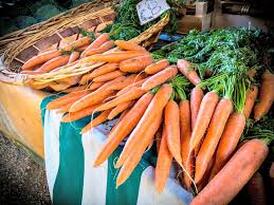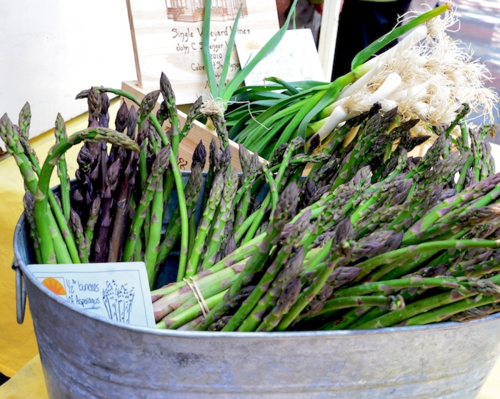 By Contributing Writer; Aimee Whittington Ph.D. Growing evidence shows that farmers’ markets reduce food insecurity, and thus risk of hunger. They do so by generating social capital, promoting healthy food utilization and consumption, and increasing healthy food access in target communities. Additionally, many markets are recognizing a growing role in anti-hunger work. Definitions of food security vary but the most widely accepted definition is “a situation that exists when all people, at all times, have physical, social, and economic access to sufficient, safe, and nutritious food that meets their dietary needs and food preferences for an active and healthy life”. (Food and Agriculture Organization of the United Nations) Partnerships between nonprofit area food banks and local farmers’ markets provide opportunities to distribute the maximum social and nutritional benefits of farmers’ markets. Traditionally and still too often, an experience afforded overwhelmingly to middle- and high-income consumers. Aligning farmers’ markets with food banks generates opportunities for markets to serve low-income customers and fight hunger where it begins. Building social capital in a community has become increasingly important, with the evolution of social media. Broadly defined, social capital is “the value of social networks, bonding similar people and bridging between diverse people, with norms of reciprocity”. With regard to fighting hunger, social capital is central to food security. More of the former leads to greater chance of the latter. Social safety nets/supports and connected communities increase household resilience to economic and environmental stressors. While social exclusion or deprivation greatly increase rates of food insecurity. Surveys of farmers’ markets show that social interaction and community-building are important reasons for attendance, on the part of both customers and vendors. Farmers’ markets empower food insecure customers to consume healthy food, via formal and informal education programs and incentives. Markets provide a setting for community members to gain the knowledge, confidence, and desire required to choose and prepare a variety of (often unfamiliar/region-specific) fruits and vegetables. When asked, market visitors overwhelmingly report positively affected attitudes towards ‘healthy food’ consumption. And studies show well over 50% of regur farmers’ market patrons report eating more fruits and vegetables because of their attendance. By incorporating educational materials, markets working with nonprofits that target low income consumers, can assist customer learning and positively affect the attitudes towards healthy food choices. In addition to changing customer attitudes, farmers’ markets can increase access to nutritious food. Strategic placements of markets in locations frequented by target populations can increase geographic access to healthy food. By partnering with local food banks, farmers’ markets provide access to products normally inaccessible to food bank patrons. Based on national SNAP and WIC enrollment, farmers’ markets are not convenient to low-income community members. Over half of the people using a federal benefit had to travel over 30 minutes to reach the market, with half of those having to utilize public transport. Partnerships between farmers’ markets and food banks work especially well because of the food bank itself, which hosts many low-income clients. The influence of farmers’ markets in general, and those in Massachusetts with respect to the Healthy Incentives Program in particular, on economic access to food is quite clear. By encouraging all vendors to accept SNAP, WIC, and WIC and Senior FMNP food assistance, markets increase the number of food insecure and/or low-income customers who have access to healthy food. Markets at which eligible vendors accept food assistance benefits have, overwhelmingly and for ALL transaction types - higher sales. Additionally, SNAP and matching incentive programs have brought new customers and new revenue to markets across the country. Depending on the city, between 25-60% of new market customers surveyed cited them as a reason for attending. When farmers’ markets generate income and influence market forces at vendors’ booths and beyond, they can increase their community’s overall economic and food security. The “social atmosphere” of farmers’ markets encourages small business and entrepreneurial growth, in addition to developing business management skills in growing enterprises. They can be used to build supportive social networks, while promoting a strong local economy, creating income for small producer. Not only does aligning farmers’ markets with local nonprofit food banks create opportunities for low-income communities to combat food insecurity, it also cultivates small business growth, as a return on investment to community.
0 Comments
Leave a Reply. |
AFM Marketblog
Bringing you organic, grass-fed, pasture-raised, locally-sourced blog posts on a semi-weekly basis from the Amherst Farmers' Market. Archives
July 2022
categories...
All
|

 RSS Feed
RSS Feed
